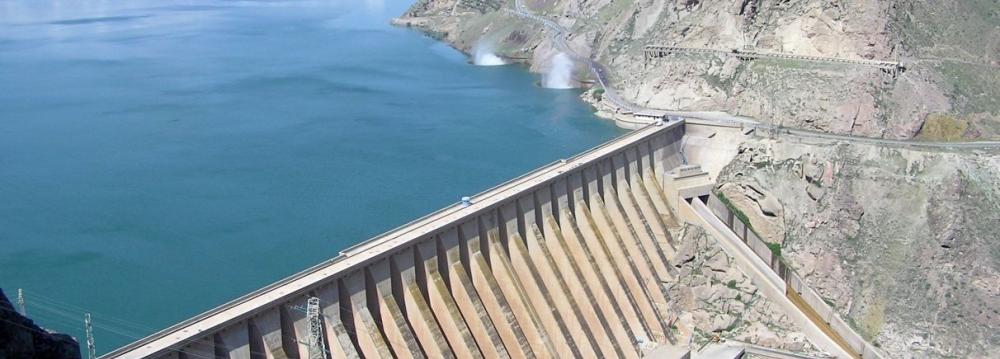Water storage at Sefidrud Dam has reached 488 million cubic meters, which does not show any change compared to the same period of last year, the managing director of Gilan Regional Water Company said.
“Therefore, there is adequate water in the dam to be supplied to the farmlands and paddy fields of the province,” Vahid Khorrami was also reported as saying by ILNA.
“So far, no lack of water and drought in paddy fields has been reported and the conditions are good,” he added.
Sefidrud Dam is built on the Sefidrud river in the Alborz mountain range, located near Manjil County in the northern province. It was constructed to store water for irrigation and produce hydroelectric power.
It has a capacity to hold 1.75 million cubic meters of water and its power station has an installed capacity of 87 MW.
The largest reservoir dam in Gilan, Sefidrud Dam supplies water to 172,000 hectares, out of a total of 238,000 hectares of paddy fields in the province.
Due to its moderate climate, agriculture and animal husbandry are the main occupations in Gilan. Over half of its farmlands are under rice cultivation and the region is one of the major rice production hubs of Iran.
Other well-known Gilan products include tea, citrus fruits, hazelnut, peanut and caviar. Annually, 2.5 million tons of crops are produced in the province.
Gilan Province’s annual water consumption tops 3.3 billion cubic meters, most of which is used in the agro sector.
Farming practices, especially rice farms spanning 240,000 hectares, gobble up 90% of water supply in the northern region, most of which is supplied from the Sefidrud Dam.
Households and industries account for 300 million cubic meters of the total consumption.
The province is home to 54 rivers that extend over 2,500 kilometers. Nonetheless, collecting surface water has turned into a big challenge, as significant volumes of surface water are lost due to the lack of reservoirs.
The construction of inflatable rubber dams can help the region's agriculture. Inflatable rubber dams are cylindrical rubber fabrics placed across channels, streams and rivers to raise the upstream water level when inflated. The fabric is flexible and yet exhibits good wear-resistance characteristics.
Gilan gets some of the heaviest rains among Iran’s 31 provinces. Annual rainfall in the green and picturesque region is about 1,100 millimeters. Nevertheless, due to the absence of wastewater and surface water collection networks, high levels of precipitation have always spelled trouble for residents who bear the consequences of floods.
Wastewater Collection
Wastewater treatment facilities in northern Gilan Province is lagging behind due to poor and underdeveloped infrastructure, especially in the rural areas.
An estimated 90 million cubic meters of wastewater are annually produced by households in the northern tourist region, a big portion of which (70 mcm) is not recycled and flows into the Caspian Sea, or is lost to seepage.
To expand sewage collection network and boost effluent reclaiming capacity in Gilan, 13 wastewater treatment facilities are under construction.
Estimated to cost $200,000, the plan will cover nearly 250,000 people in Rasht, Bandar Anzali, Astara, Fouman, Talesh, Astaneh Ashrafieh, Roudsar, Siahkal, Somesara, Masal and Langeroud.
The plants will increase the province’s sewage processing capacity by at least 30,000 cubic meters per day to reach 200,000 cubic meters per day.
Close to $100,000 have been spent on the 13 projects and they are expected to become operational later this year.


